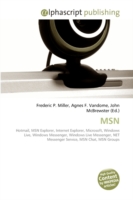Full Description
"How many times have you heard 'a picture is worth a thousand words.' . . . In this text, Lapp, Wolsey, Wood, and Johnson make a vital connection between reading words and the role of graphics. They demonstrate how teachers and students can blend the two such that great learning occurs in every classroom, every day."
—DOUGLAS FISHER
Coauthor of Rigorous Reading
Imagine you are a fourth grader, reading about our solar system for the first time. Or you're a high school student, asked to compare survival in Suzanne Collin's The Hunger Games and Elie Wiesel's Night. Reading complex texts of any kind is arduous, and now more than ever, students are being asked to do highly advanced thinking, talking, and writing around their reading. If only there were ingenious new power tools that could give students the space to tease apart complex ideas in order to comprehend and to weld their understandings into a new whole.
Good news: such tools exist. In the two volumes, Mining Complex Texts, Grades 2-5 and 6-12, a formidable author team shares fresh ways to use the best digital and print graphic organizers in whole-class, small-group, and independent learning. Big believers of the gradual release method, the authors roll out dozens of examples of dynamic lessons and collaborative work across the content areas so that we see the process of using these visual tools to:
Help students read, reread, and take notes on a text
Promote students' oral sharing of information and their ideas
Elevate organized note-making from complex text(s)
Scaffold students' narrative and informational writing
Move students to independent thinking as they learn to create their own organizing and note-taking systems
Gone are the days of fill-'em-in and forget-'em graphic organizers. With these two volumes, teachers and professional development leaders have a unified vision of how to use these tools to meet the demands of an information-saturated world, one in which students need to be able to sift, sort, synthesize, and apply knowledge with alacrity and skill.
Contents
Acknowledgments
Chapter 1. Graphic Organizers: Making the Complex Comprehensible
How to Think About Standards Alignment
How to Help Students Meet the Standards
Tips for Using Graphic Organizers Dynamically
How to Meet Eight Intertwined Academic Goals
What Lies Ahead in This Book
Chapter 2. Thinking on the Page: The Research Behind Why Graphic Organizers Work
Picture This: Visuals Quicken and Deepen Text Learning
General Tips: How to Use Graphic Organizers Well
Tiered Organizers: Scaffold Student Progress
Examples of Tiered Graphic Organizers
Adapting Graphic Organizers for Tiered Learning
A Sample Tiered Lesson
At-a-Glance Chart of Graphic Organizers Matched to Academic Goals
Chapter 3. Using Graphic Organizers to Acquire Academic Vocabulary
Frayer Organizer
Concept/Definition Map
Word Map
Chapter 4. Graphic Organizers Support Literary Text Reading and Writing Tasks
Character Graphic
Freytag's Pyramid
Chapter 5. Graphic Organizers Support Informational Text Reading and Writing Tasks
Text Search and Find Board
4-Square With a Diamond
Modified KWL
Tabbed Book Manipulative
Chapter 6. Graphic Organizers Support Students' Reading Proficiencies
Somebody-Wanted-But-So
Understanding Text Structures: Five Text Types
Chapter 7. Graphic Organizers Boost Questioning and Responding
I-Chart and I-Guide
Flip Chart Manipulative
Text-Dependent Question/Response Organizer
Chapter 8. Graphic Organizers Foster Reading, Forming, and Writing Opinions
Six-Part Opinion Organizer
Thinking Map
Chapter 9. Graphic Organizers Support Collaboration
Project Management Organizer
Conclusion
Appendix
Glossary
References
Index








